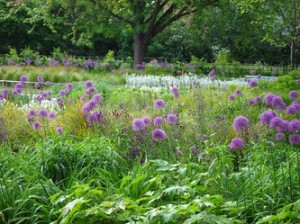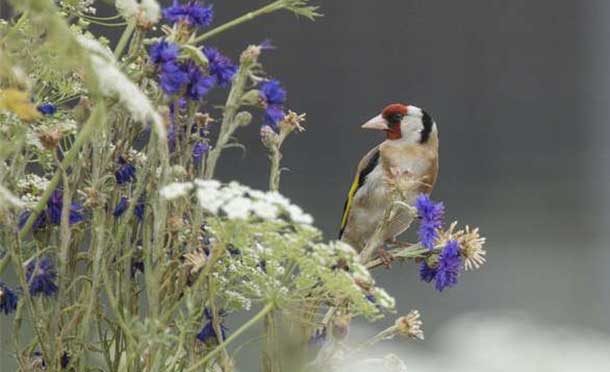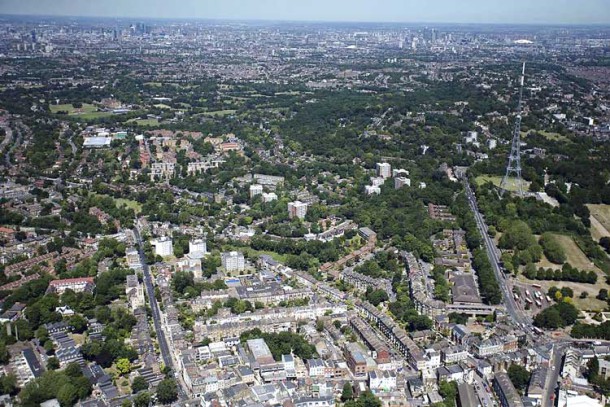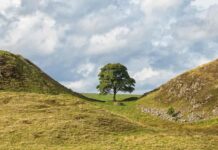Councillors in Brixton’s Vassall ward are backing a plan to make London – which has more green spaces than any other major city in Europe – the world’s first national park city. Helen Reid meets the man with the plan

The national park city initiative is campaigning to have Greater London declared a semi-protected area and to encourage urban nature conservation, greening and farming throughout the capital
“This could give London something extra,” Cllr Paul Gadsby told the Brixton Blog. “The two parks in my ward – Myatt’s Field and Slade Gardens – are beautiful to look at, and offer a great deal of biodiversity.”

Vassall ward is one of the most deprived in Lambeth, said Cllr Gadsby, emphasising that this makes its green spaces all the more important.
Daniel Raven-Ellison, the brains behind the London National Park City initiative, explained his vision to me.
While visiting England’s 15 national parks, he wondered why no city was represented. “Cities can be more biologically diverse and ecologically valuable than the countryside, which is counter-intuitive for people.
“A fox, a pigeon, a little owl, a worm, are just as valid in the city as in the countryside, and we shouldn’t be prejudiced against them just because they’re urban.”
Raven-Ellison, who studied geography and globalisation at the School of Oriental and African Studies, part of the University of London, says: “In some ways cities are even more important from the human side, because we’re here”.
His project is inspired by rural national parks, but he stresses that London is a huge park that we live in and interact with every day.
He is particularly inspired by education, and cites a report showing that one in seven London children have not been to a green space with their parents for at least 12 months. “We’re aiming for 100% of children to be in touch with nature in London,” he says.

Raven-Ellison devotes himself full-time to the campaign: “There’s such a positive likelihood of this working out that it needs a few people who are fully behind it.”
He believes we are in an age in which people are used to notions being disrupted and hacked together – so a national park city which seems “bonkers” at first suddenly becomes a possibility.
There are 654 wards in Greater London, and the support of at least two-thirds of these (436) is required for the protected area to be created in law. So far, 45 have declared their support.
His strategy of targeting councillors rather than the upper echelons of the political system is, he says, more democratic.
“It’s far more citizen-led. If we persuade 1,500 councillors and over 400 wards to support us, that’s a lot of people at the grassroots who have bought into the idea. It gives us a strong base to work from.”
The national park city campaign is lobbying the mayoral candidates for support. Zac Goldsmith, former editor of The Ecologist magazine, contributed some money to printing the National Park City proposal, and Sadiq Khan, who’s promising to be the greenest Mayor yet, is also onside.
After the wards’ support is won, a “soft partnership” will look after the national park city. Raven-Ellison envisages this as a small taskforce of park caretakers working with existing organisations towards improving people’s awareness of how to enjoy London through its nature.

The National Park City would cost far less than Boris Bikes, Daniel adds, or than the controversial Garden Bridge, the eco-infrastructure project now grabbing headlines.
Raven-Ellison supports the Garden Bridge, one end of which would be in Lambeth, but emphasises the need for it to “work for” green spaces less known to tourists. He suggests a visitors’ centre at one end of the bridge, explaining how to get to the myriad other parks and natural spaces in London.
He accepts that “some people say green initiatives are already happening, so why do we need the National Park City label?”
His answer is: Yes, there is a lot of great stuff happening, which is why we can get this label, but this project is about amplifying what is great, telling the stories more and filling in the gaps.
“Look at the great work in Myatt’s Fields in terms of community growing, educating children. That doesn’t happen everywhere – so what if people could learn from that, and apply it to every other park in London?”
The national park label would also add to London’s global image: “We can say to investors and tourists that London’s a green city, but we don’t yet have an articulate way of communicating that”.
Raven-Ellison also wants to shake up the demographic of people engaging with their environment, and encourage all kinds of Londoners to get involved with conservation work.
“We need some radical solutions to this,” he says.
Making London a National Park City has to be the most radical, and the simplest, solution yet.
If you would like your councillors to support the initiative, you can contact them via the writetothem website and ask them to declare their support.
More information on the Greater London National Park City Initiative here. Twitter: @LondonNPC








How to green-wash London happily…